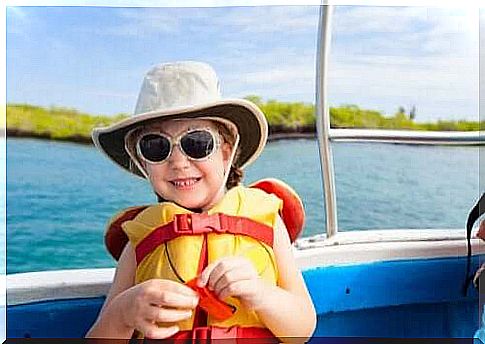Navigation Standards For Children – Parenthood

Many parents can be worried about bringing their children on a boat. Probably when browsing they would feel concerned about their safety. Or that they would wonder what to do if they get seasick, etc. However, this adventure can be very pleasant, even unforgettable, for young and old!
In order for parents and children to be at peace, it is necessary to take into account some important aspects and not leave any details behind before sailing with children. There are some general safety standards for boating and also some specific recommendations about precautions to be taken when children are on board. In the rest of this article, we’ll tell you more!
Meteorological information
The first thing to do before sailing, whether or not with children, is to learn about the weather conditions. These must be optimal so that the trip is pleasant and to avoid possible bad times. If the forecast is not clear, it is best to cancel the navigation and avoid taking risks beyond our control.
Weather information specific to sea areas can be found. This information is widely disseminated through various means of communication.

Precautions to be taken when sailing with children according to their age
Boating experience and the safety measures that must be taken vary depending on the age of the minors. For example, babies will be safer in cabins, and the movement of the boat will likely help them sleep for a while.
As for children between the ages of 5 and 10, generally, they benefit more from the experience of navigation and they live every detail as a great adventure. Older children and teenagers will need extra motivation to enjoy the trip. It may then be a good idea to involve them in the spots of the boat; surely they will greatly appreciate!
Children should remain under the constant vigilance of an adult throughout the boat trip. In addition, they must wear life jackets and, if the sea is rough, they will also have to wear the safety harness. It is also important to teach some basic boating standards to children who are old enough to understand.
Observe the instructions given during navigation
To navigate with children in the best possible conditions, the first thing to do is to explain to them that in the boat, it is the captain who decides. They must therefore obey all orders given, for their safety. While sailing, a disobedient child can endanger himself, but can also endanger others.

Children must learn to respect the safety standards of the boat throughout the trip. For example, they should know that they cannot go to the bow without an adult and that there are some things they cannot touch under any circumstances, such as the controls or the radio.
Children must understand that on the boat, you must always behave when moving.
If these safety standards are met, fun for the children will be guaranteed. In addition to the boating itself, activities such as jumping from the boat (when the anchor is set, of course), snorkeling or fishing are generally preferred by children. There are a lot of water activities and water sports that one can enjoy!
What if they get seasick while sailing?
This is very common in children, as well as in adults. However, children under the age of 2 are generally less prone to it. Either way, seasickness can seriously spoil the day of sailing… That is why we advise you to follow some recommendations which can help to avoid seasickness of children when sailing.
The first thing you can do is give them kid-friendly drugs for seasickness that contain dimenhydrinate. It is important that they take them half an hour before boarding the boat. Another good recommendation is to make sure they are eating a good breakfast, hydrating properly, and getting vitamin C.









